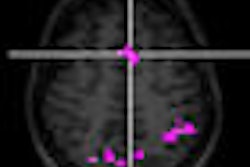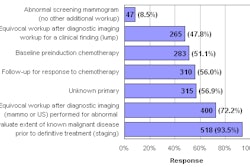At least five MRI magnets have exploded in U.S. healthcare facilities over the last 10 years, but the incidents have gone mostly unreported, according to Wlad Sobol, Ph.D., a medical physicist and professor of radiology at the University of Alabama at Birmingham (UAB) Health System.
Sobol began investigating the incidents after a magnet at one of UAB's partner institutions exploded in the middle of the night in January 2007. No one was hurt, but the force of the explosion demolished the MRI suite and damaged the building's exterior walls and roof. Sobol presented his findings at the American Association of Physicists in Medicine (AAPM) meeting in July in Houston.
Through follow-up research, Sobol learned about several other similar incidents: On December 7, 2006, a magnet exploded at an outpatient imaging facility in Kennesaw, GA, injuring two workers who were moving the machine, and in 2006 a magnet exploded in a Mobile, AL, hospital. Also in 2006, a TV station in Salisbury, MD, captured on film an MRI explosion at the Peninsula Regional Medical Center. The local news report stated that the magnet was being "vented" and was in the process of being replaced by a new magnet.
After investigating the scene of an explosion, inspecting current installations, and visiting two MRI magnet manufacturing sites, Sobol said the most plausible reasons for explosions are the mishandling of hardware during installation, removal, or servicing, as well as environmental or operational missteps that affect operating conditions.
He advises medical physicists overseeing installations and day-to-day maintenance to become very familiar with the operational characteristics of magnet cryosystems composed of thermal and mechanical stresses and superefficient insulation.
"Those involved with installations need to be aware of cryogenic venting arrangements and ensure the pipes are not clogged," Sobol said. During his inspections, Sobol used a camera to view pipes and said he observed "ice blocking" within the plenum, or frozen water blockage in the adaptor vent adjacent to the burst disk.
Under normal conditions, the cryostat is pressurized to a few psig (pound-force per square inch gauge) to prevent ice block formation. In rare cases, ice blockage may clog the pressure monitoring line, leading to increased pressure in the cryostat that would cause the burst disk to shatter and the magnet to quench and vent helium gas into the atmosphere. What makes the situation potentially catastrophic is when a room vent pathway is also blocked by a different ice plug. This would cause an explosive quench, Sobol said.
Other ways to mitigate risk from explosions lie in the site planning design, frequent inspections of pipe and venting systems during installs, and ongoing monitoring of the cryoventing system's performance, he said.
It is reasonable to suspect that there may have been other incidents besides those half dozen that occurred in the southeast, Sobol said. Publicizing mishaps is not an avenue for drawing national attention that facilities or manufacturers would choose. Reporting is strictly voluntary, and the U.S. Food and Drug Administration (FDA) does not track MRI magnet explosions, he added.
"Available anecdotal information suggests that a surprising number of existing MRI installations, especially the older ones located in rural areas, may suffer from subpar, shoddy cryovent implementations. These might create risks nobody is prepared to accept," Sobol said.
By Kathlyn Stone
AuntMinnie.com contributing writer
September 30, 2008
Related Reading
Back to the present: VA updates MRI design guide, part II, December 5, 2007
Back to the present: VA updates MRI design guide, part 1, December 3, 2007
What does your MRI vendor know about your quench vent that you don't? July 3, 2007
Stand around and wait -- stat! What's your imaging suite emergency procedure? June 11, 2007
It's 300 gauss: Do you know where your vent is? December 29, 2006
Copyright © 2008 AuntMinnie.com



















